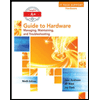Specifications: Part-1 Part-1: Description In this part of the lab you will build a single operation ALU. This ALU will implement a Bitwise Right Rotation. For this lab assignment you are not allowed to use Digital's Arithmetic components. The ALU you will be implementing consists of two 4-bit inputs (named inA and inB) and one 4-bit output (named out). Your ALU must rotate the bits in inA by the amount given by inB (0-15). Part-1: User Interface You are provided an interface file lab2_part1.dig; start Part-1 from this file. You are not permitted to edit the content inside the dotted lines rectangle. Interface (do not edit the content inside this box) Inputs Outputs 0 1 0 0 inA, A, inA₂ A₂ inA, OKA, inA, A Rotatee: Rotation amount: inB3 OnB, inB₂B, inB, B, inB, in 0 0 1 0 Result of Rotating input A by the amount given by input B: out3D out3 out2 out2 out out1-out O outo Figure: Lab2_part1.dig Interface Part-1: Example {inA_3, In the figure above, the input values that we have selected to test are inA inA_2, inA_1, inA_0} = {0, 1, 0, 0} and inB = {inB_3, inB_2, inB_1, inB_0} = {0, 0, 1, 0}. Therefore, we must rotate the bus 0100 bitwise right by 00102, or 2 in base 10, to get {0, 0, 0, 1}. Please note that a rotation right is not the same thing as a shift right (which many newcomers are apt to confuse)! =
Specifications: Part-1 Part-1: Description In this part of the lab you will build a single operation ALU. This ALU will implement a Bitwise Right Rotation. For this lab assignment you are not allowed to use Digital's Arithmetic components. The ALU you will be implementing consists of two 4-bit inputs (named inA and inB) and one 4-bit output (named out). Your ALU must rotate the bits in inA by the amount given by inB (0-15). Part-1: User Interface You are provided an interface file lab2_part1.dig; start Part-1 from this file. You are not permitted to edit the content inside the dotted lines rectangle. Interface (do not edit the content inside this box) Inputs Outputs 0 1 0 0 inA, A, inA₂ A₂ inA, OKA, inA, A Rotatee: Rotation amount: inB3 OnB, inB₂B, inB, B, inB, in 0 0 1 0 Result of Rotating input A by the amount given by input B: out3D out3 out2 out2 out out1-out O outo Figure: Lab2_part1.dig Interface Part-1: Example {inA_3, In the figure above, the input values that we have selected to test are inA inA_2, inA_1, inA_0} = {0, 1, 0, 0} and inB = {inB_3, inB_2, inB_1, inB_0} = {0, 0, 1, 0}. Therefore, we must rotate the bus 0100 bitwise right by 00102, or 2 in base 10, to get {0, 0, 0, 1}. Please note that a rotation right is not the same thing as a shift right (which many newcomers are apt to confuse)! =
A+ Guide to Hardware (Standalone Book) (MindTap Course List)
9th Edition
ISBN:9781305266452
Author:Jean Andrews
Publisher:Jean Andrews
Chapter4: Supporting Processors And Upgrading Memory
Section: Chapter Questions
Problem 7RB
Related questions
Topic Video
Question
given the inputs, please create a circuit that connects to the interface box

Transcribed Image Text:Specifications: Part-1
Part-1: Description
In this part of the lab you will build a single operation ALU. This ALU will
implement a Bitwise Right Rotation. For this lab assignment you are not allowed to
use Digital's Arithmetic components.
The ALU you will be implementing consists of two 4-bit inputs (named inA and inB) and
one 4-bit output (named out). Your ALU must rotate the bits in inA by the amount
given by inB (0-15).
Part-1: User Interface
You are provided an interface file lab2_part1.dig; start Part-1 from this file. You
are not permitted to edit the content inside the dotted lines rectangle.
Interface (do not edit the content inside this box)
Inputs
1
Outputs
·0
inA, in, inA,
=
Rotatee:
Rotation amount:
0
0
AinA, A, inA, A
inB, in, inB₂ BinB, in, inB, ins
0
0
1
0
Result of Rotating input A by the amount given by input B:
out3D out3-out2 out2-out D
out1-0010
Figure: Lab2_part1.dig Interface
outo
Part-1: Example
In the figure above, the input values that we have selected to test are inA = {inA_3,
inA_2, inA_1, inA_0} {0, 1, 0, 0} and inB = {inB_3, inB_2, inB_1, inB_0} = {0, 0,
1, 0}. Therefore, we must rotate the bus 0100 bitwise right by 00102, or 2 in base
10, to get {0, 0, 0, 1}. Please note that a rotation right is not the same thing as
a shift right (which many newcomers are apt to confuse)!
Expert Solution
This question has been solved!
Explore an expertly crafted, step-by-step solution for a thorough understanding of key concepts.
This is a popular solution!
Trending now
This is a popular solution!
Step by step
Solved in 3 steps with 1 images

Knowledge Booster
Learn more about
Need a deep-dive on the concept behind this application? Look no further. Learn more about this topic, computer-science and related others by exploring similar questions and additional content below.Recommended textbooks for you

A+ Guide to Hardware (Standalone Book) (MindTap C…
Computer Science
ISBN:
9781305266452
Author:
Jean Andrews
Publisher:
Cengage Learning

A+ Guide to Hardware (Standalone Book) (MindTap C…
Computer Science
ISBN:
9781305266452
Author:
Jean Andrews
Publisher:
Cengage Learning